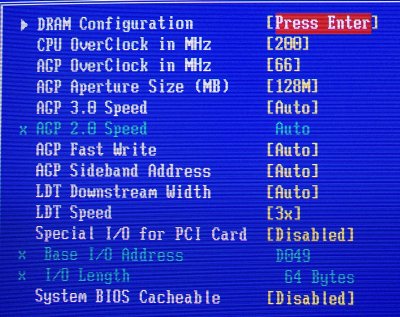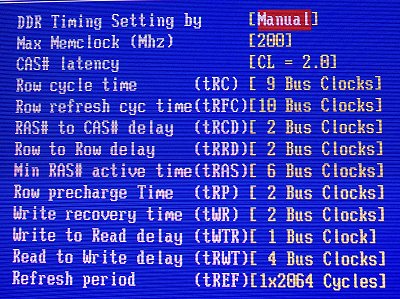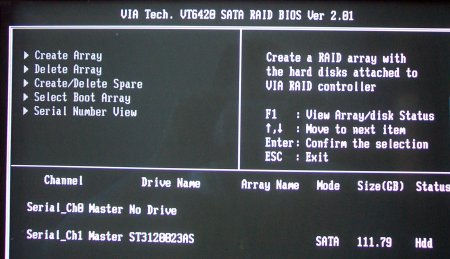K8NHA Pro BIOS
Looking at the nForce 3 150-powered K8NHA Pro's BIOS now. We don't expect it to be too different from the VIA's.
The first and most crucial change is with respect to voltages. The K8NHA Pro allows the user some voltage manipulation. CPU Vcore choices are + 1.7%, + 3.4% and +5.1%. We'd prefer the usual +0.05v, +0.1v etc., and we'd like at least 10% extra Vcore from default. Something is always better than nothing, we suppose.

A similar screen to the K8VHA's. CPU's FSB is limited to 250MHz and AGP speeds vary from 66MHz (default) to 100MHz. Also, much like its sister board, the K8NHA doesn't explicitly specify a PCI-locking feature. It's assumed. Here, the LDT or HT speed is shown in multiples of 200MHz. The board offers up to 4x LDT, which would equate to full-speed 800MHz. However, it even fails to post with 4x applied. 3x is the best you're going to get. Again, we'll do well to remember that the HyperTransport buslink here is between the chipset (single-chip) and the CPU.

VIA's useful tool shows us that it doesn't run at full, theoretical speed. We'd not worry too much that bandwidth is being stalled by the 8-bit 600MHz upstream speed. That still translates to 1.2GB/s potential throughput. It's double-width, or 16-bit, downstream.

The DRAM timings section is a carbon copy of that found on the K8VHA Pro, which is a good thing for us enthusiasts. The above timings were consistent between both boards, and both applied them correctly in an OS environment. Maximum memory clock settings impose a DRAM divisor that forces the board, at the default 200MHz, to not surpass the quoted speed. So for a maximum memory clock of 166MHz (DDR333), the board will apply an on-die-to-DRAM ratio of /13 (2000MHz / 13 = 153.84MHz, the highest speed that's guaranteed to be below the forced 166MHz).

The VT6420 PCI-based SATA is analagous to the VIA's on-chip support, save for bandwidth limitations. As mentioned before, it's intuitive and easy to use. Here you can see a single Seagate 120GB SATA drive that was used to test the controller's efficiency. You'd obviously need two hard drives to dabble in RAIDing. We lament that the manual provides zero information on the board's RAID abilities.

Notice how, at default voltage, the nForce3 150 Biostar board reads 0.08v lower than the supposed default (and non-changeable) K8VHA Pro's BIOS. That suggests that the VIA board uses a default voltage that's a little higher than normal. Setting the maximum +5.1% CPU voltage gave a BIOS load of 1.59v. That's better than the 1.53v from the K8VHA but probably lower than we would have liked. The SMART setting is analagous to that found on Biostar's SFF system. It's strange that Biostar didn't include a shutdown temperature in the K8NHA Pro's BIOS.
This BIOS is a little better than the K8T800's, but we can still see major room for improvement.









